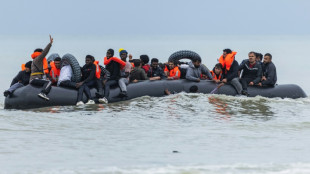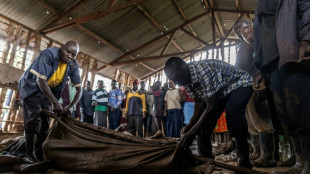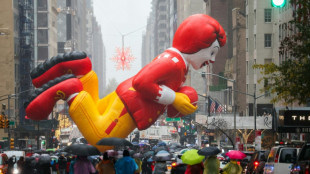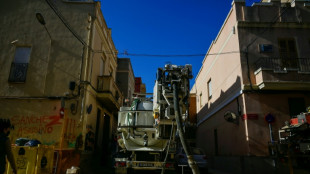

Tehran football derby ignites passions in Iran
Excitement is running high among fans of Tehran's two football giants before Wednesday's derby between Persepolis and Esteghlal whose long-running rivalry has ignited passions in sports and politics for decades.
The Azadi stadium, which is home to both teams, is one of the largest in the world, and will see its seats packed for the 103rd Tehran Derby.
"It's the most important match. There's a crazy atmosphere, incredible to experience," Kevin Yamga, the only Frenchman playing in Iran, told AFP.
"Half of the stands are all blue, the other all red," said Yamga, who has played in five derbies since joining the blues of Esteghlal in 2021.
Fans travel hundreds of kilometres to reach the capital before spending the night near the stadium to secure a seat.
"It's a very, very strong rivalry, comparable to that between the clubs of Manchester - United and City - or of Glasgow - Celtic and Rangers," Yamga said.
The Frenchman, however, will not be playing on Wednesday due to injury.
Both teams are competing in the Iranian top-tier football league, the Persian Gulf Pro League.
Esteghlal are top of the table, three points ahead of title holders Persepolis, with 11 games to play.
- Female VAR -
This year, for the first time in Iran, a woman will join the refereeing team for a men's match.
Though not on the field, 34-year-old Mahsa Ghorbani will observe the match with two others as video assistant referees.
Ghorbani's assignment is a mark of a new era in a closed-off world of Iranian men's football that has rarely seen women in the stadiums.
Last year, 3,000 Iranian women, after decades of fighting to get into stadiums, were able to attend their first derby, a move welcomed by FIFA.
"Iranian women have proven that they can obtain their rights, despite the patriarchal management of football," said Ebrahim Afshar, one of the country's best-known sports journalists.
"And one day, one of them will become the main referee."
The Islamic republic's two most popular clubs have also left their footprints in the country's politics over the decades.
Esteghlal, Persian for "independence", considered to be the club of the elite close to power, was founded in 1945 by an influential military officer under the name Taj, or "crown", of Tehran.
The club was associated with the Pahlavi dynasty which ruled Iran until 1979, when it was toppled by the Islamic Revolution.
In contrast, Persepolis aimed to be the people's club, after its founding in 1967 by a boxing champion.
"But in truth, Persepolis had players who were proud to be members of the shah's secret police, while some Taj players were from the left," which opposed the Iranian monarchy, Afshar said.
Both clubs managed to survive the Islamic Revolution, whose initiators considered football a pastime promoted by the ancien regime to distract the population's attention from "serious issues".
Forty-five years later, politics remains a pillar of fan bases on both sides, who accuse each other of benefiting from government financial support.
Their intense rivalry has forced public personalities to hide their allegiances to avoid criticism by supporters of the opposing team.
Out of 102 matches, 49 have ended in draws so far, with Persepolis winning 27 and Esteghlal 26.
"The history of the derby has shown that the pressure is such that the result is often decided on an act of play, a throw of the dice, rather than on the quality of the teams," said Afshar.
It is unlikely to see a repeat of the 6-0 defeat inflicted by Persepolis on Esteghlal in 1973, the memory of which is cultivated with pride by supporters of Iran's most successful club.
C.Maier--MP




